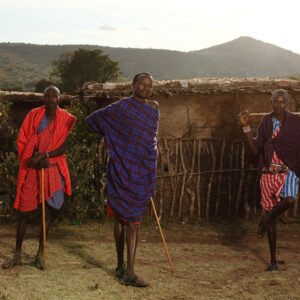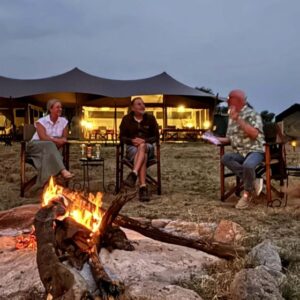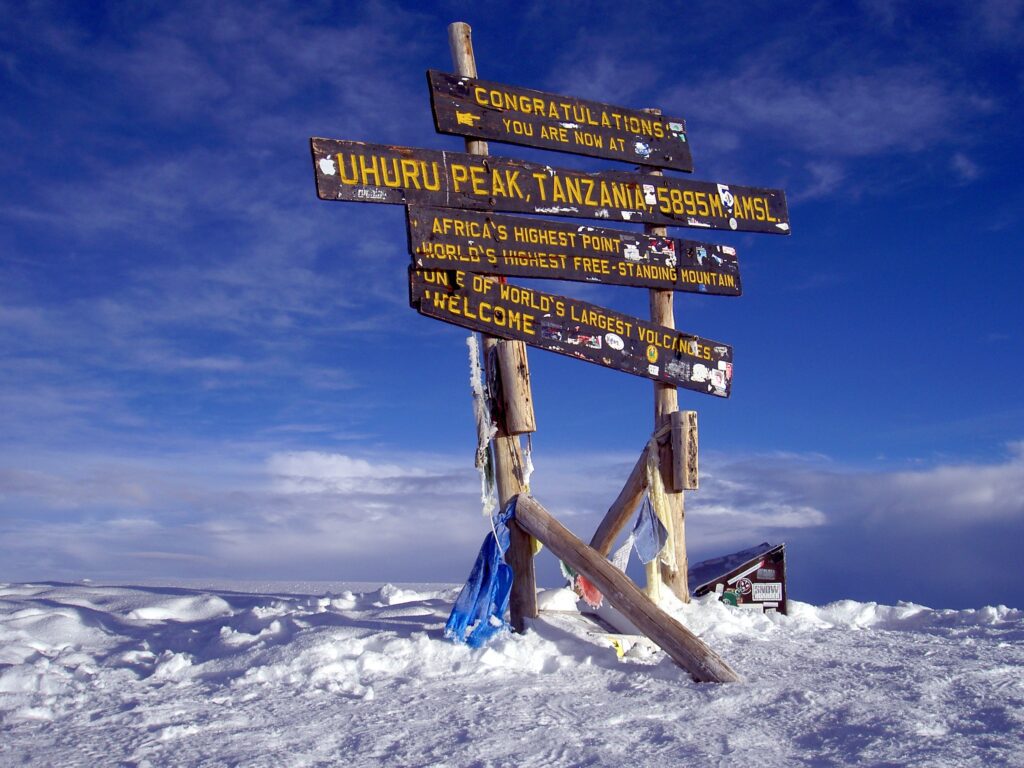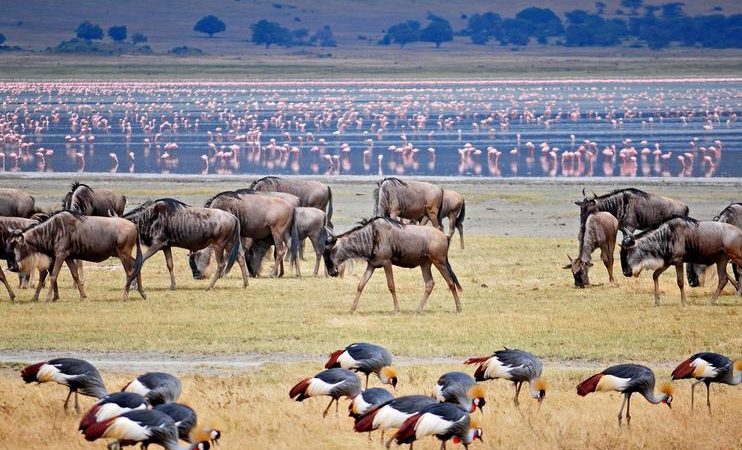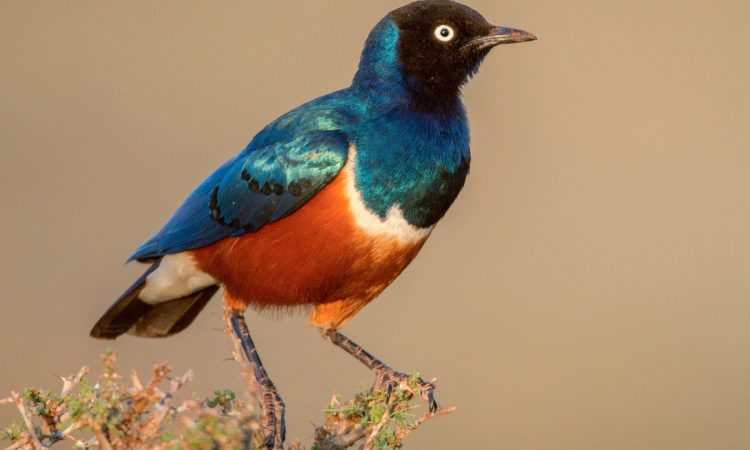Tanzania, a haven of natural beauty and wildlife, draws thousands of visitors every year who are eager to witness its iconic landscapes, ranging from the sweeping plains of the Serengeti to the verdant forests of Ngorongoro Crater. While Tanzania offers incredible safari experiences year-round, one season stands out above the rest: the calving season. Occurring from January to March, the calving season brings an extraordinary display of life and survival, offering a truly remarkable and unforgettable experience for any safari-goer.
If you are contemplating when to embark on a safari to Tanzania, this article will outline the top 10 reasons why you should go during the calving season. From witnessing the birth of countless baby animals to observing incredible predator-prey interactions, the calving season is an opportunity that shouldn’t be missed. Let’s dive into the heart of this unique phenomenon and explore why it’s the perfect time to visit Tanzania. A Tanzania safari during the calving season, typically from January to March in the southern Serengeti, offers a unique chance to witness the “Great Migration” and the birth of thousands of wildebeest calves, along with abundant wildlife sightings and predator action.
1. A Front-Row Seat to the Circle of Life
One of the most compelling reasons to visit Tanzania during the calving season is the opportunity to witness the raw, unfiltered circle of life in action. The calving season is when many of Tanzania’s herbivores, particularly wildebeest, zebras, and gazelles, give birth. These newborns are incredibly vulnerable and depend on their mothers for protection, warmth, and guidance.
Witnessing the first steps of newborn animals is nothing short of awe-inspiring. The sight of a wildebeest calf wobbling on its legs for the first time. Or a zebra foal darting after its mother is both heartwarming and humbling. It’s a chance to see nature in its purest form and a rare opportunity to connect with the cycle of life on an emotional level. Ndutu Calving Season 8 Day Serengeti Migration Tanzania
2. A Wildlife Photographer’s Dream
For anyone passionate about wildlife photography, the calving season is an absolute dream. The sheer abundance of newborn animals on the plains creates the perfect setting for capturing dramatic, poignant, and breathtaking photographs. The golden light that bathes the savannah during the early morning and late afternoon hours makes for stunning shots that showcase the contrast between the baby animals. The vast African landscape and the predators in pursuit. 6 Day Ndutu Wildebeest Migration Calving Safari
From dramatic images of predators stalking their prey to heartwarming moments of mothers caring for their young. The calving season provides an endless array of opportunities for photographers to capture once-in-a-lifetime shots. The dynamic interactions between animals and the vibrant colors of the landscape will ensure that your photography portfolio will stand out.
3. Predator-Prey Drama at Its Best
Tanzania’s calving season is not just about the newborns; it’s also a time of heightened activity for the region’s predators. As the vulnerable young animals take their first steps, they quickly become prime targets for predators such as lions, cheetahs, hyenas, and wild dogs. The dramatic chase, the high-stakes ambushes, and the ruthless nature of predator-prey dynamics unfold before your very eyes.
Watching a lioness stealthily stalking a wildebeest calf. Or witnessing a cheetah sprinting across the plains in pursuit of a young gazelle adds an element of suspense and excitement to your safari. The intensity of these moments offers an unparalleled sense of raw, untamed nature that is both thrilling and humbling.
4. Smaller Crowds for a More Exclusive Experience
While the calving season is an exciting time to visit Tanzania, it falls during the low season for tourism in comparison to the dry season (June to October). This means there are fewer crowds and a more exclusive, intimate safari experience. With less congestion in the parks and reserves, you’ll be able to experience the wild landscapes in a more tranquil and personalized way.
Moreover, the smaller crowds provide more opportunities for quality wildlife viewing, as safari vehicles are less likely to be crowded around key sightings. Whether you’re observing a pride of lions or a herd of elephants, the serenity and lack of hustle and bustle will make your experience even more memorable.
5. Ideal Conditions for Wildlife Viewing
The calving season coincides with the short rains in Tanzania, which typically occur from November to May. These rains bring a lush, green coat to the plains, creating ideal conditions for animals to thrive. Fresh grass and an abundant food supply allow herbivores to give birth to their young in a more conducive environment. This increased food availability also means that the herbivores are generally healthier and more active, offering more opportunities for visitors to witness animals grazing, nursing, and interacting with one another.
Additionally, the short rains help cool the temperature, making the climate more comfortable for both visitors and wildlife. This mild weather creates the perfect setting for a safari, as animals tend to be more active during the cooler hours, increasing the chances of memorable wildlife sightings.
6. The Serengeti at Its Most Beautiful
The Serengeti, a UNESCO World Heritage Site, is widely regarded as one of the most iconic wildlife destinations in the world. During the calving season, the landscape is at its most picturesque. The green grasses sprout from the fertile soils, and the plains are dotted with newborn animals and their mothers. The contrast between the vibrant green of the landscape and the animals that populate it creates a stunning visual experience.
Not only does the Serengeti provide incredible wildlife experiences during the calving season, but it also offers dramatic vistas. The endless savannahs stretch to the horizon, creating an expansive sense of space. Whether you’re taking in the view from a lodge or on a game drive, the Serengeti during this time is a feast for the eyes.
7. Witness the Great Migration in Its Early Stages
While the Great Migration reaches its peak later in the year, the calving season marks an important part of the migration cycle. The wildebeests and zebras that calve during this time are part of the larger migration, and their birth coincides with the beginning of their journey across the Serengeti plains. As the newborns grow stronger, they will join the larger herds that travel towards the Masai Mara in Kenya, continuing one of the most awe-inspiring migration events in the natural world.
By visiting Tanzania during the calving season, you’re witnessing the early stages of this epic migration, when the animals are still in the midst of their survival struggles. This gives you a front-row seat to the beginning of one of nature’s most remarkable phenomena.
8. A Rich Diversity of Species to See
While wildebeests, zebras, and gazelles are the stars of the calving season, they are not the only animals to see during this time. The calving season attracts a wide variety of species, creating a rich diversity of wildlife encounters. Herds of elephants, prides of lions, hyenas, cheetahs, giraffes, and a host of bird species all converge in the area, making it a true wildlife haven.
In addition to the newborn animals, you’ll likely encounter predators actively hunting, birds of prey soaring overhead, and scavengers waiting for their turn. This diverse ecosystem makes Tanzania’s calving season an incredible opportunity for anyone looking to see a wide range of animals in their natural habitats.
9. Educational Value for Nature Enthusiasts
For those interested in the natural world, a safari during the calving season provides invaluable insight into the behaviors, challenges, and interactions that define Tanzania’s wildlife. Expert safari guides are highly knowledgeable about the complexities of the calving season and can offer a wealth of information about the animals, their social structures, and survival tactics.
Whether you’re learning about the life cycle of the wildebeest, the parenting strategies of zebras, or the hunting techniques of cheetahs, the calving season offers a unique educational experience. This is not just a holiday; it’s a chance to gain a deeper understanding of the ecosystems that sustain these incredible animals.
10. The Opportunity for Lasting Memories
Finally, a safari during the calving season promises memories that will last a lifetime. From witnessing the birth of a calf to watching a cheetah sprint across the plains, these experiences will stay with you long after your journey ends. Whether you’re traveling with family, friends, or as a solo adventurer, the moments you’ll capture and the emotions you’ll feel are priceless.
The calving season allows you to connect with nature in a profound way, providing a deeper appreciation for the wild world and all the life it sustains. The beauty of the Serengeti, the intensity of predator-prey dynamics, and the joy of seeing new life emerge are experiences that will stay in your heart for years to come.
Top Destinations for Calving Season in Tanzania
During Tanzania’s calving season, explore the breathtaking landscapes of Ngorongoro Crater, where diverse wildlife thrives in a unique ecosystem. Visit Tarangire National Park for its iconic baobab trees and large elephant herds. Journey to Lake Manyara for stunning birdwatching opportunities, and don’t miss the Serengeti’s vast plains, teeming with life as baby wildebeests take their first steps.
Serengeti National Park: The heart of Tanzania’s calving season, particularly in the southern Serengeti, where millions of wildebeests, zebras, and gazelles give birth. The wide open plains offer excellent wildlife viewing and predator-prey interactions.
Ngorongoro Crater: Known for its high concentration of wildlife, the crater is a great spot to witness calving, especially for wildebeests and zebras. The fertile environment supports the growth of grass for grazing.
Tarangire National Park: Although more famous for elephants, Tarangire is also home to herds of wildebeests and gazelles, where calving can be observed during the rainy season, especially in the park’s northern areas.
What Activities will I do during the Tanzania safari calving Season?
During Tanzania’s calving season, you’ll witness the breathtaking sight of thousands of wildebeests giving birth on the Serengeti plains. Join guided safaris to observe these vulnerable newborns as they take their first steps amidst sprawling landscapes. Engage with local Maasai communities to learn about their culture and the migratory patterns of wildlife. Capture stunning photographs of the “greatest show on Earth,” and revel in thrilling night safaris, where you’ll experience the Serengeti’s nocturnal wonders come alive.
Where Should I Stay during Tanzania calving Season & For How Long?
During Tanzania’s calving season, typically from January to March, the Serengeti is the prime destination. Opt for stays in mobile tented camps near the southern plains for proximity to the migrating herds. These camps offer a unique wilderness experience, allowing for intimate wildlife encounters. Aim for a stay of at least four to five days to fully immerse yourself in the breathtaking spectacle of nature, witnessing the birth of thousands of wildebeest and their dramatic journey.
Tips for a Successful Calving Season Safari
It is breathtaking to see the herds on the vast open plains of the southern Serengeti and Ndutu plains, as over 8,000 calves are born daily. The Calving Season Safari offers travel in custom 4×4 safari vehicles with open tops for optimal game viewing. If you’re planning a safari to Tanzania during the calving season, here are a few tips to ensure a memorable and successful trip:
Book Early: The calving season is a popular time for safari tours, so it’s essential to book your safari early to secure the best accommodation and safari vehicles.
Choose the Right Lodge: Stay in accommodations located in the southern Serengeti or near the Ngorongoro Crater to be close to the calving grounds.
Travel with Expert Guides: Experienced safari guides will enhance your experience by providing valuable insights into the behavior of the animals and the landscape, ensuring you don’t miss out on key moments.
Pack Appropriately: While the weather is generally mild, it’s important to bring suitable clothing for both the warm days and cool evenings. Don’t forget a good pair of binoculars and a camera to capture the magic.
Tanzania Safari During the Calving Season Packages
Tanzania offers specialized safari packages during the calving season, typically from January to March. These tours focus on the southern Serengeti and Ngorongoro Crater, offering guided game drives to witness the birth of wildebeest, zebras, and gazelles. Packages include luxury lodges, mobile camps, and expert guides, providing an immersive experience with fewer crowds. Some packages also include predator sightings and photography-focused options for capturing the dramatic wildlife interactions. 7-Day Ndutu Migration Calving Season Safari Itinerary
When to go on a Tanzania Safari During the Calving Season
The best time to go on a Tanzania safari during the calving season is between January and March. This period coincides with the short rains, when the southern Serengeti and Ngorongoro Crater are alive with newborn animals. The lush green landscapes provide ideal conditions for wildlife, and the weather is mild. Visiting during this time offers the chance to witness dramatic predator-prey interactions and the birth of thousands of wildebeest, zebras, and gazelles. 10 Tips to See the Best of the Great Migration Calving Season
Tanzania Safari During the Calving Season vs. the Great Migration
The calving season (January to March) offers a focus on newborn wildlife, with dramatic predator-prey interactions and lush landscapes. It’s a quieter time, perfect for intimate experiences. In contrast, the Great Migration (June to October) is marked by massive herds of wildebeests, zebras, and gazelles crossing the Serengeti in search of fresh grazing. The migration is more crowded, but it provides thrilling river crossings and large-scale wildlife movements, offering a different yet equally captivating safari experience.
Tanzania Safari Calving Season vs Grumeti River crossings vs Mara River crossing Migration
In the heart of Tanzania, the legendary Serengeti comes alive during the calving season, as thousands of wildebeest and zebras give birth, painting the plains with vibrant life. This period is marked by the tender sight of newborns wobbling alongside their protective mothers amidst lush green grasses. However, peril lurks close, as predators keenly scent vulnerability. As the migration commences, herds embark on an exhilarating journey towards the Grumeti River, where crocodiles await in the murky depths, eager for their feast. The treacherous Mara River crossing follows, a chaotic spectacle of hooves and splashes as the animals risk it all against a backdrop of stunning savanna, a heart-pounding testament to nature’s relentless cycle of life and survival.
The Ultimate Guide to the Africa’s Great Migration: Everything You Need to Know
“The Ultimate Guide to Africa’s Great Migration” is an essential resource for nature enthusiasts and adventure seekers alike. This comprehensive handbook delves into the awe-inspiring journey of over a million wildebeest, zebra, and antelope as they traverse the Serengeti and Masai Mara ecosystems. With detailed maps, timing insights, and the best viewing locations, readers are equipped to witness this iconic spectacle. Engaging anecdotes from seasoned guides illuminate the intricate dynamics of predator and prey. Readers will also find practical travel tips, wildlife photography advice, and ethical guidelines for conservation. Perfect for both first-time travelers and seasoned explorers, this guide ensures an unforgettable experience of one of Earth’s most dramatic natural events.
Final Thought
A Tanzania safari during the calving season offers a truly extraordinary experience. The abundance of newborn animals, the dramatic predator-prey interactions. The ideal wildlife viewing conditions and the reduced crowds all contribute to making this time one of the best to visit Tanzania. Whether you’re a wildlife enthusiast, photographer, or simply looking for a unique adventure. The calving season provides an unmatched opportunity to witness the beauty and intensity of life in the African wild. If you’re seeking a once-in-a-lifetime safari experience, there’s no better time than the calving season in Tanzania.


